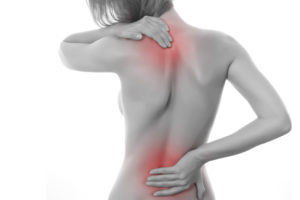To help understand modern medicine and medical thinking today, it can be insightful to consider medicine’s history. Summarising a long and complex history into one blog isn’t really possible, but can we look at a few important historical factors that are influential in today’s modern medical understanding.
We can start around the renaissance period. This period marked the resurgence of Greek and Roman philosophy and thinking. Religious beliefs were in decline and growth occurred in the interest in observation, logic and measurement. Everything around us could be categorised, analysed and explained. This move led to great advances in the understanding of the human body and over time a great number of important discoveries occurred. The circulatory system for example. Throughout the 17th and 18th centuries scientific inquiry was often directed at understanding the mechanics of how things function. This blossomed into the industrial revolution. But such mechanical understanding was also key to medical understanding. The body was likened to an industrial machine. All the various ‘parts’ of the body could be divided up and assigned their certain and specific functions. In order to understand the body thoroughly, it could be taken apart and observed. The thinking was that the body could be understood in the same way as a clock. Treatments followed this thinking. To fix a human body you need to identify the faulty part and fix that. This thinking has been particularly influential in the division between “the mind” and “the body”. It has also been influential in separating medicine into a range of specialities. The mind was historically seen as something intangible and unexplainable whilst the body was a machine driven by the choices of the mind. This division remains entrenched in medicine to this day. Although progress is being made. “Physical” health services are separated from “mental” health services. Interventions, such as surgery, are regularly performed to fix the mechanics of the body. This has not been without success. The historical interest in investigating and understanding small parts has led to the discovery of bacteria, viruses and helped explain a myriad of medical conditions that were once untreatable. However, such mechanical thinking and understanding has issues. We have inherited the idea that we can use our bodies like machines. We ask them to do something and they perform. When something goes wrong, like when we get pain, it is because something is wrong in the body. We expect something to be fixed. But this underappreciates the whole and the complex interactions that go on.
Today, our modern medical understanding has been built on the fantastic historical work that has been done. But it also enlightens us to the flaws inherent in mechanical thinking. The brain is indeed the primary decision-making centre, but it doesn’t function as a top-down, hierarchical boss. It is connected to the rest of the body’s systems. These systems are in constant interaction. The “body” and the “mind” cannot be separated, there is just one human. If a person lacks sufficient sunlight, nutrition or physical conditioning they may be more prone to “mental health” issues. But light, nutrition and physical conditioning could be considered “body” factors. Likewise, evidence suggests that if you feel sad you will experience higher levels of pain. If your friend tells you that headaches are dangerous you will get more pain from headaches. There are fascinating insights into the powers of social influence and physical condition on both “mental” and “physical”. When we consider everyday life, we have a myriad of examples that show a very clear connection between thought and physical responses. Consider what happens when you are nervous, excited or scared. These are decisions taken by the brain, based on information that “the body” is not partial too, like an upcoming job interview. The brain (i.e. person) thinks about the impending interview and whoosh wide ranging changes in the body occur- increased heart rate, breathing, alertness to name a few. So medical issues you may be suffering, or others may be suffering from, really are in your mind….and at the same time they are in your body…there is only one human. Physical influences mental, mental influences physical. Modern medicine doesn’t always do this. All of us need to consider all of us when addressing medical problems.




